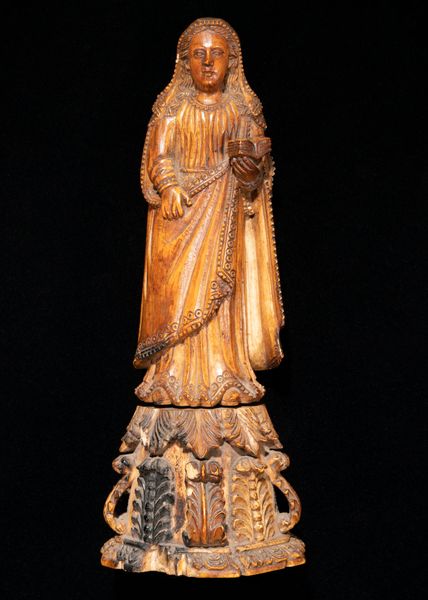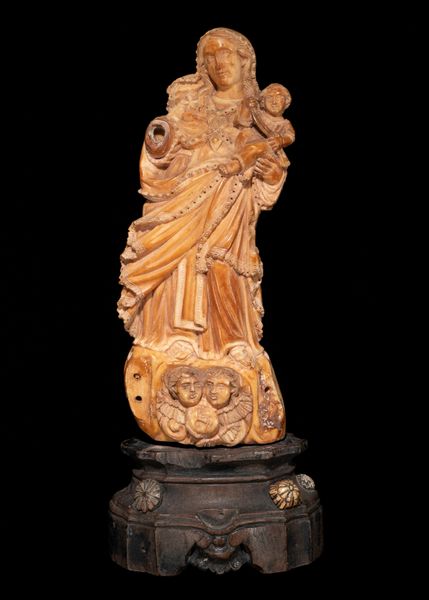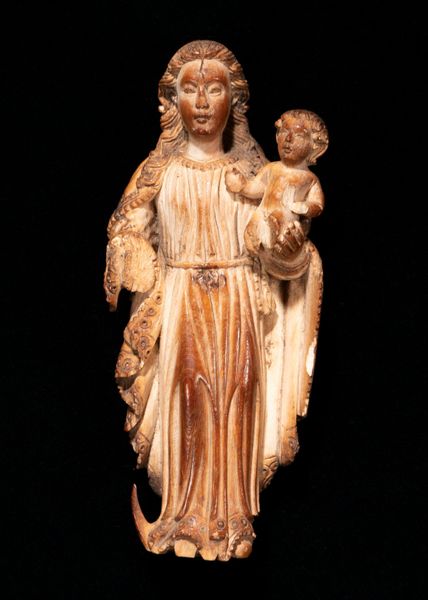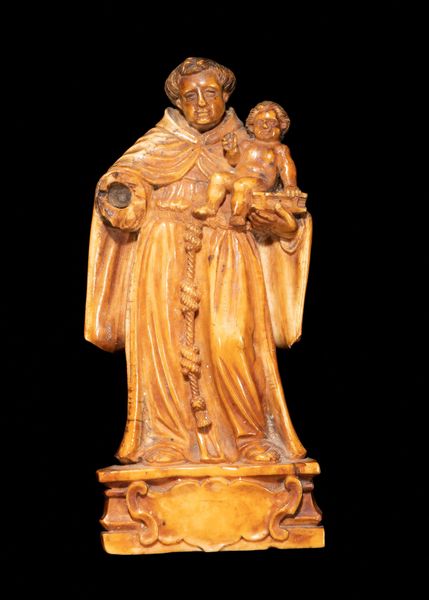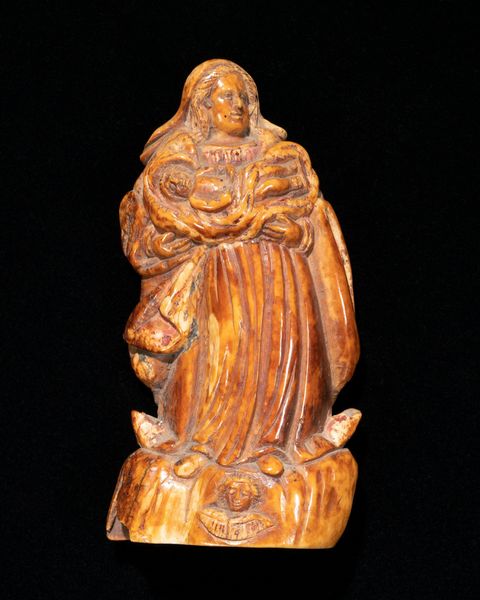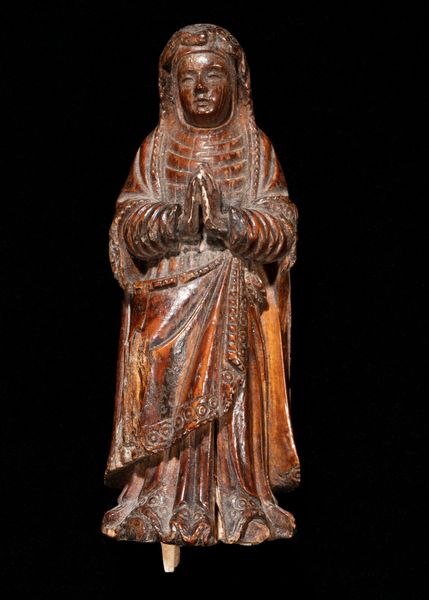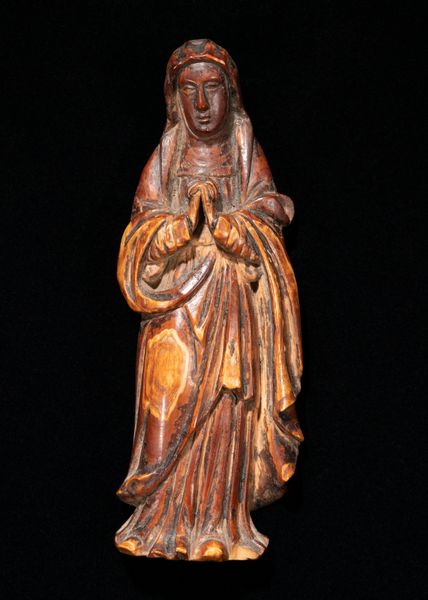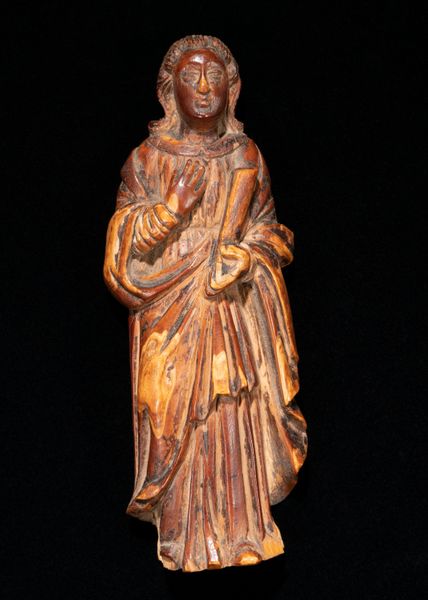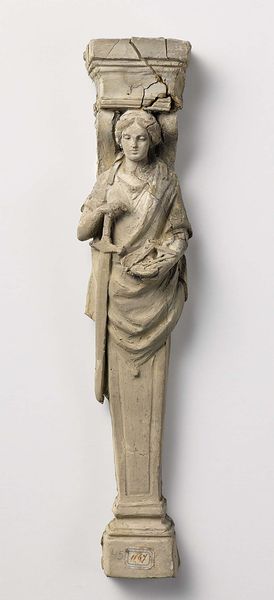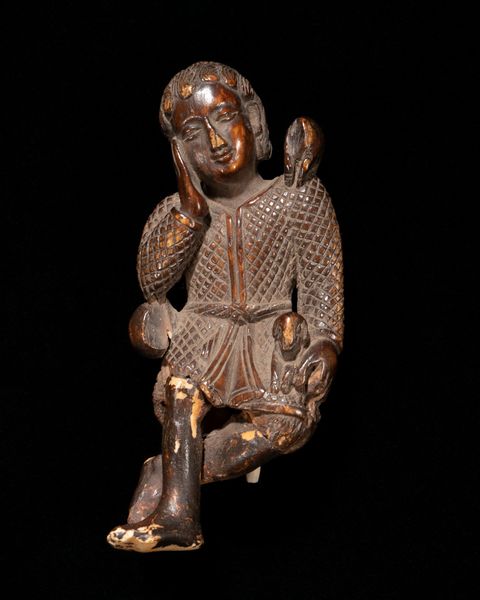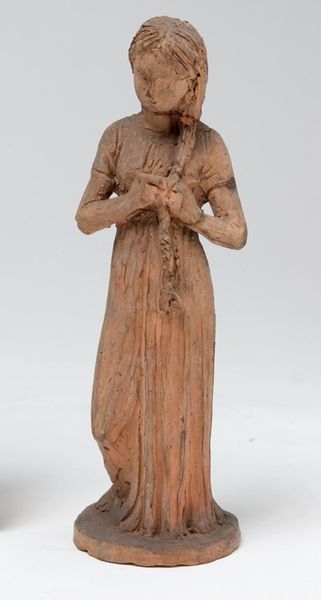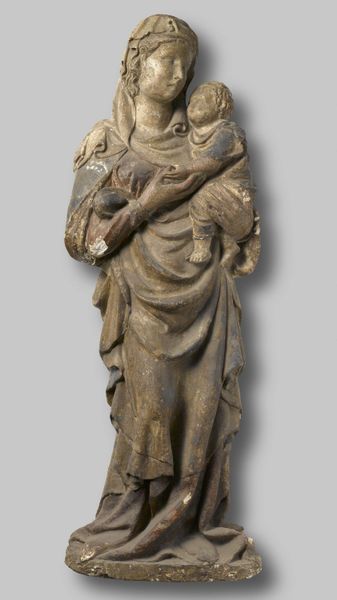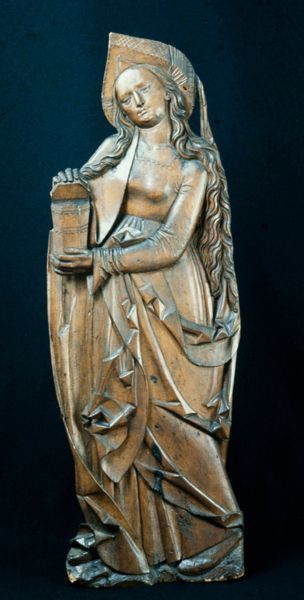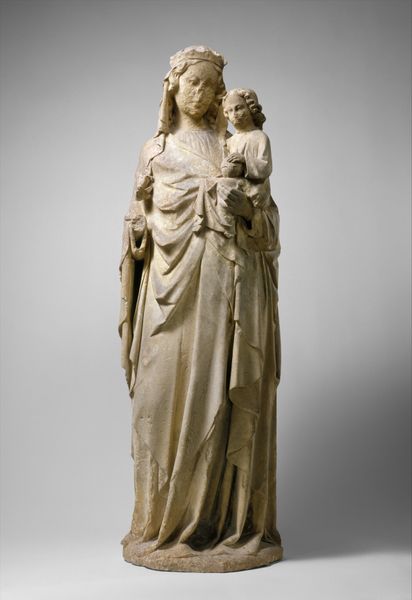
carving, sculpture, ivory
#
portrait
#
carving
#
baroque
#
sculpture
#
figuration
#
sculpture
#
ivory
Dimensions: 6 9/16 × 2 1/4 × 1 3/4 in. (16.67 × 5.72 × 4.45 cm) (including base)
Copyright: Public Domain
This Madonna and Child, of unknown date and maker, is carved from a single piece of ivory. Ivory carving is subtractive - the artist would have carefully cut away material to reveal the forms within. Looking closely, you’ll notice the subtle color variations and the smooth, dense texture, which gives the sculpture its distinctive warmth and presence. The modeling of the drapery and the delicate features of the figures demonstrate remarkable skill. Ivory has historically been a prized material, linking the object to systems of trade and colonial exploitation. The material itself would have been costly, making this sculpture a luxury item meant for display in a private collection. This piece invites reflection on the global circulation of materials, the labor involved in its production, and the complex social context in which it was created. Considering these aspects allows us to appreciate this artwork beyond its aesthetic qualities.
Comments
minneapolisinstituteofart almost 2 years ago
⋮
The province of Goa in western India was under Portuguese control from 1512–1961, forming a nexus in trading routes that circumnavigated the earth. Goan craftsman were renowned for their supple modeling of ivory (likely exported from Mozambique) into Christian icons, which feed the appetite for luxury products in Europe, as well as furthered evangelical missions throughout Asia and the Americas. Within the genre of Indo-Portuguese ivories, popular subjects include ‘Christ as the Good Shepard’ (the image of Christ as child would have related to similar bronze statuettes of the God Krishna) and the ‘Virgin of the Immaculate Conception,’ which shows Mary atop a crescent moon, both of which remain ever-present icons in South Asia’s diverse religious landscape.
Join the conversation
Join millions of artists and users on Artera today and experience the ultimate creative platform.
